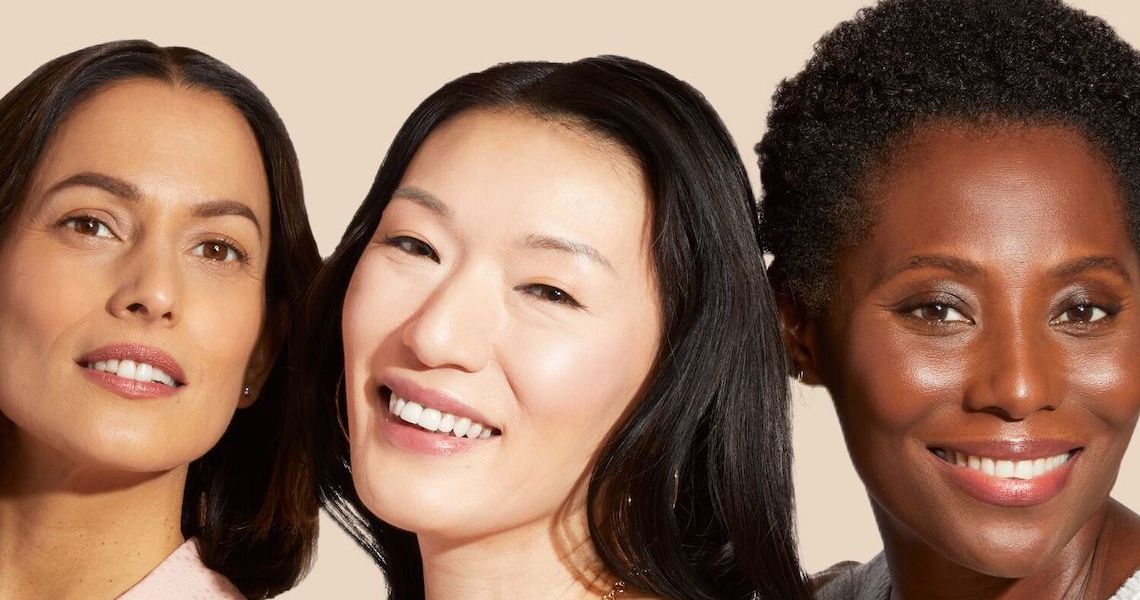Getting older can be tough, but it doesn’t have to be.
This simple adage inspired the 25-year-old Laura Geller Beauty brand to turn its attention to celebrating women over 40-years-old. On April 9, it held its first-ever National Mature Women’s Day marketing holiday celebrating aging and mature beauty.
In 2019, Laura Geller Beauty conducted a deep dive into its customer base and found that its core customer is at least 40-years-old. From there, it shifted its marketing strategy in 2021 to exclusively feature models over 40-years-old in all its advertisements. The brand also introduced an age-based discount for customers over 40-years-old based on an honor system, as well as a month-long sweepstake for U.S. customers to win a convertible car and a hotline allowing customers to chat about makeup tips and tricks with Geller herself. Laura Geller Beauty is predominantly sold through QVC and its own DTC e-commerce site, and DTC accounts for just over 50% of brand sales, according to Sara Mitzner, brand marketing director at Laura Geller Beauty.
“We want to continue to resonate with women of all ages and are hopefully getting better at connecting with her. We have [pivoted] over the last two years so she can feel like she can contact us and is not just a person purchasing from Laura Geller Beauty,” said Laura Geller, founder of Laura Geller Beauty. “Many mature women [say], ‘Oh, I’m not in the marketplace anymore. I’m married, and I have kids. What’s the point in me trying to do this?’ But when they know they can [recreate a look] because it’s simple and it’s good product, they’re more willing to give it a try.”
In 2018, Laura Geller Beauty’s owner at the time, Glansaol LLC, filed for Chapter 11 bankruptcy. The brand was then acquired by AS Beauty LLC. AS Beauty also owns makeup brand Cover FX, which it acquired in February 2022. It also scooped up Julep Beauty as part of the bankruptcy.
The National Mature Women’s Day campaign engaged nearly 75 paid and unpaid older women, including beauty and lifestyle macro-influencers Sheree Frede (@SheSheShow; 121,000 Instagram followers) and Keli Rabon (@Kelir; 100,000 Instagram followers), and food and wellness micro-influencer Gwen Gottlieb (@GwenLivesWell; 63,400 Instagram followers). Influencer posts about the holiday led to 2,000 click-throughs to the brand’s DTC e-commerce site LauraGeller.com. Approximately 50% of these influencers were new relationships for the brand. Laura Geller Beauty also featured banner and homepage announcements on its website and email marketing, but it didn’t invest in any paid social media advertisements on Instagram or Facebook.
During the one-day holiday event, over 10,000 customers signed up to receive a code for the age-based discount, which was valid until April 30. Three-thousand people were new customers and 7,000 were existing customers. Another 20,000 people signed up for the sweepstakes that ended on April 30. It was only eligible for people over 40-years-old. New customer sign-ups will receive a series of welcome emails over the next few weeks that educate people about Laura Geller Beauty, including its product quality (everything is made in Italy, for example) and promote best-selling products like its Spackle range of primers.
Mitzner said that because this was an entirely new approach for Laura Geller Beauty, the key performance indicators were centered on brand awareness rather than new customers or overall sales. The holiday was not designed to be a key sales driver due to the steep discounts. The team looked at what video and photography posts performed well, in terms of likes and comments on Facebook and Instagram, as well as the click-through rate to the brand’s website from social media posts, and the earned media value from publications like NewBeauty and Prevention. Overall, there was a 21% social media engagement rate on influencer posts, which far outperformed the KPI benchmark of 3.5%, Mitzner said. That’s especially given that the campaign debuted on a Saturday when social media use can be lower.
“There certainly are holidays that celebrate women over 40-years-old, like Mother’s Day and a Senior Citizens day in September, which celebrates both men and women over 65-years-old. But there isn’t a day that’s about women over 40-years-old, specifically,” said Mitzner. “We wanted to make sure we were celebrating the mature woman, her beauty and her confidence, and owning this market.”
Mitzner added that it was important for the brand “to put its money where its mouth is,” by acting on its commitment to celebrating older women through the combination of discounts and sweepstakes. In an era of always-on social media and mindfulness, brand platitudes on self-care and empowerment have increased tenfold. And though brands are more likely to include older women in campaigns as a matter of inclusivity, and feature the occasional older woman as a spokesperson, few brands carve out dedicated space to speak exclusively to women over 40-years-old. One other makeup brand, Lilah B., decided in 2021 that Gen-X women are historically underserved, which makes them an opportune whitespace. In 2021, it invested 200% more in paid media specifically targeting Gen-X women, compared to 2020.
“[Mature customers] love makeup but don’t necessarily wear a lot of makeup. There is no question that she doesn’t want to take a long time,” said Geller. “She wants some simple things that make her look better and feel good and can last a long time. [This feeds into] how we’re going to continue to create products to make life easier for [older] women.”




